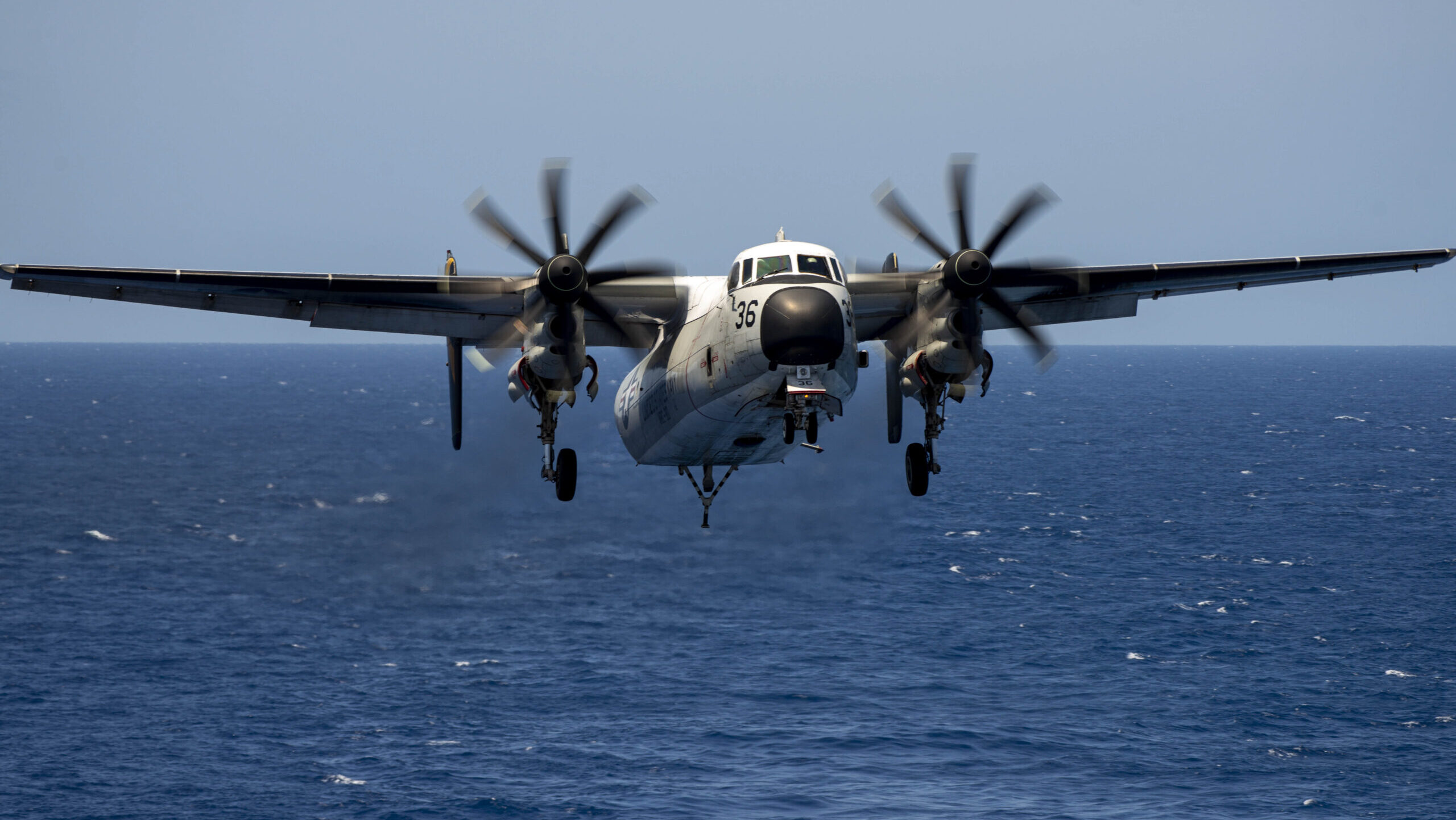
A C-2 Greyhound from the “Providers” of Fleet Logistics Support Squadron (VRC) 30 prepares to make an arrested landing on the flight deck of the aircraft carrier USS Nimitz. (US Navy/Caitlin Flynn)
WEST 2024 — The US Navy is surging its last remaining C-2A Greyhound squadron to support carrier operations in US 5th and 7th Fleets, according to a Navy spokeswoman, a move that comes as its successor aircraft, the CMV-22B, remains grounded.
“Fleet Logistics Support (VRC) Squadron 40 located in Norfolk, Virginia is the last C-2 Greyhound squadron in the U.S. Navy. There are a total of 15 C-2 Greyhounds still in service to support logistics and personnel transfers on the East and West Coasts, as well as deployed aircraft carriers in U.S. 5th and 7th Fleets,” said Cmdr. Beth Teach, a spokeswoman for commander of naval air forces.
“VRC-40 is currently surging to meet the carrier onboard delivery mission for deployed aircraft carriers in U.S. 5th and 7th Fleets,” the statement continued.
The C-2 Greyhound is the Navy’s legacy cargo and personnel, fixed-wing logistics aircraft first introduced to the fleet in the 1960s. The news that the service is surging the fleet to support carriers in the Middle East and Indo-Pacific comes as the Greyhound’s successor aircraft, the CMV-22B Osprey, remains grounded amid a services-wide investigation.
Vice Adm. Daniel Cheever, commander of naval air forces, said during a panel here that the availability of Greyhounds has resulted in “limited operational impacts” on the Navy from its Osprey fleet being grounded. But he also said that “as you look into the future, [there will be] significant operational impacts if we can’t get” the CMV-22s flying again.
Asked if the Navy had considered bringing C-2s currently in long-term preservation back online, Cheever said the service is a “long way” from having to resort to that option.
The CMV-22B Osprey is the Navy’s variant of the V-22, versions of which are flown by the US Marine Corps and Air Force as well as foreign militaries such as that of Japan. All American V-22s were grounded in December in the wake of a fatal crash off Japan in November that killed eight US Air Force servicemembers. Although the grounding includes the Navy’s Osprey variant, the majority of recent high profile mishaps have been either Marine Corps or Air Force aircraft.
Some of those mishaps in recent years have been attributed to what the Pentagon calls an issue with “hard clutch engagements,” a problem the services say they have been working with industry to resolve; Boeing and Textron-subsidiary Bell jointly produce the V-22. Other mishaps, such as the deadly November crash, are still under investigation.
Lt. Gen. Tony Bauernfeind, commander of Air Force Special Operations Command, said during a roundtable with reporters today at the AFA Warfare Symposium in Colorado that with the Ospreys grounded, AFSOC operational commanders have “leveraged other joint force capabilities to meet their requirements” but declined to provide further detail.
Similarly, Gen. Christopher Mahoney, assistant commandant of the Marine Corps, previously has said his service has increased its reliance on the Marine Corps CH-53K heavy lift helicopter given the Osprey grounding.
Breaking Defense’s Michael Marrow contributed to this report from Colorado.






















